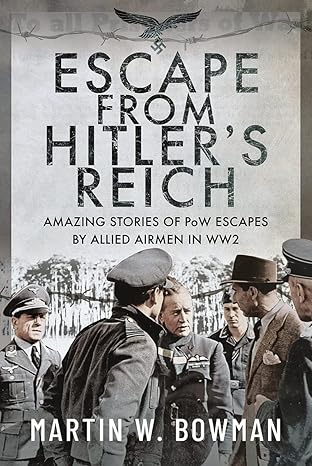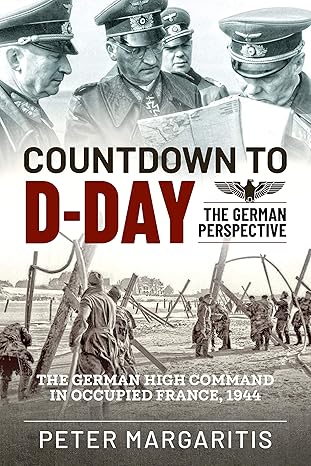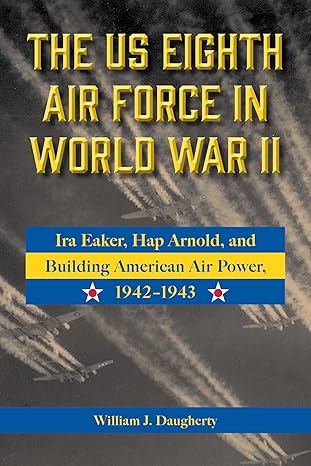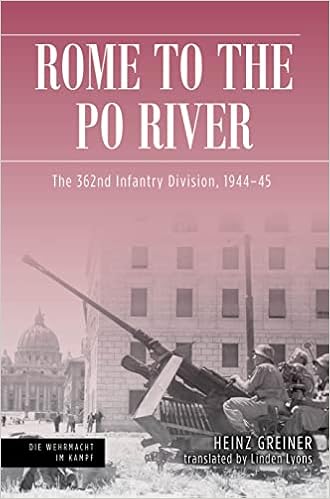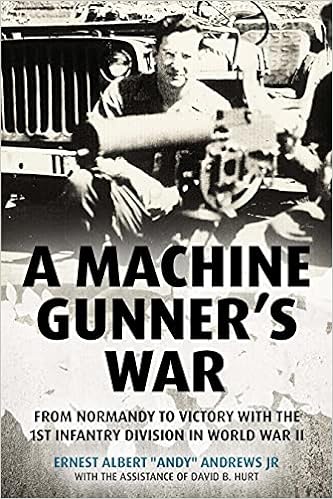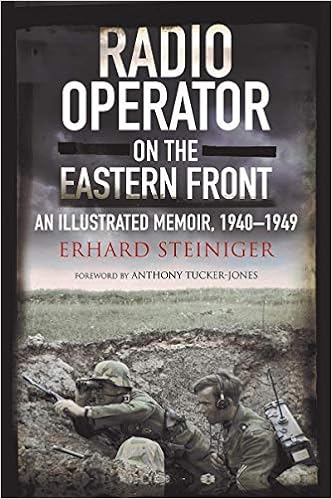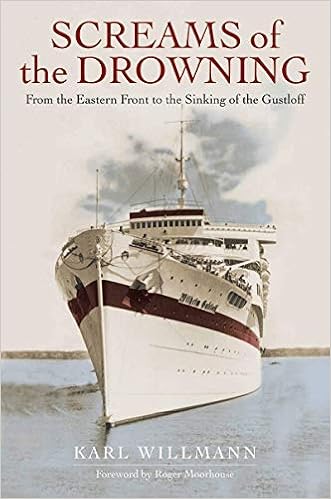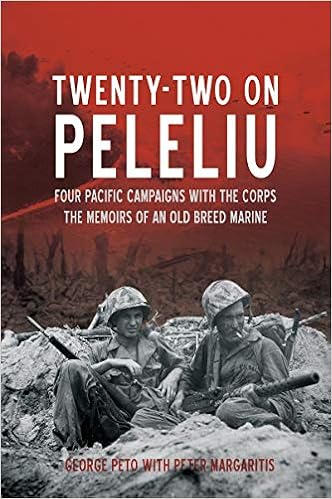The Real Story of John Ford's Navy on D-Day
By Tom Hogan
In his 1994 book about D-Day, historian Stephen Ambrose wrote that during the Normandy landings, Hollywood director John Ford led a team of cameramen on Omaha Beach whose job was to “take movies of everything.” As the battle raged, Ford dashed about, placing his men behind obstacles to shield them from enemy fire. Their film—most of it in color—was then sent back to London for processing but was never seen by the public. “Apparently,” said Ford, “the Government was afraid to show so many American casualties on the screen.”
The Ford quotes came from a 1964 interview published in The American Legion Magazine. Ford went on to say he believed his footage had been preserved after the war. After the report appeared in Ambrose's book, historians began a decades-long hunt for the missing film. It has never been found. Now, recently discovered documents from the US National Archives shed new light on the lost film of D-Day.
In 1934, John Ford applied for an appointment as a lieutenant commander in the United States Naval Reserve. Though he was an experienced yachtsman, the forty-year-old filmmaker's greatest selling point for receiving a commission was his status in Hollywood. In addition to having made several successful features about the Navy, Ford stated he had “numerous influential friends” who could be “of real value to the Navy in time of peace and in time of war.” Ironically, for a man who had mastered a visual medium, Ford's eyesight was poor and he flunked his physical. But the Navy wanted him, so he was granted a waiver and he received his commission.
Six years later, the Eleventh Naval District authorized the acclaimed director to create a reserve motion picture unit in Los Angeles. Its ranks were soon filled with veteran studio cameramen, electricians, soundmen, carpenters, film cutters and editors, writers, and even a few actors. These were men Ford had worked with for years. Some were twice the age of typical Navy recruits. Many had families. There was no other unit like it.
Two months before the Japanese attack on Pearl Harbor, Lt. Cdr. Ford and thirty of his men were called to active duty. Though they were uniformed and paid as sailors, they were attached to a newly created civilian agency in Washington, DC headed by William “Wild Bill” Donovan called the Office of the Coordinator of Information. Donovan's job was to keep President Roosevelt up to speed on what was happening in a world that was breaking out in war. Ford's men barely had time to stow their seabags in the city's naval barracks when Donovan put them to work.
In November 1941, a team was sent off to Iceland to film US strategic preparations there while the rest of the crew prepared to produce documentary and training films at Navy studios in Washington. In June 1942, when Wild Bill's agency was reorganized as the Office of Strategic Services, Ford's unit was placed in its Secret Intelligence section. As its ranks swelled with more Hollywood technicians, it was made an independent section within the OSS. It was officially designated the Field Photographic Branch. Informally, it was referred to as “John Ford's Navy.”
In August 1942, the Field Photo section for the European Theater was created to produce “motion and still pictures of strategic and confidential subjects.” Ford and Lieutenant Commander Frederick “Freddie” Spencer flew to London as an advance party and received working space at the OSS theater headquarters at 70 Grosvenor Street. The seven officers and twenty-nine enlisted men who followed on the British steamer Empire Castle brought 20,000 pounds of sensitive photographic equipment with them that they personally unloaded in England. The gear was brought to the Denham Studio Laboratories where Field Photo would process and store its footage.
As the new kids in town, Field Photo had to follow the SHAEF film handling and censoring protocols for any film that was going to be sent back to America as already established by the US Army Pictorial Service. Ford, Spencer, and representatives of the APS met and appear to have adapted to this arrangement easily. Whenever bugs in the system occasionally popped up, they were resolved cooperatively.
The cordial relationship with the APS was further exemplified during planning for Operation Torch, the invasion of North Africa. Movie producer turned Army officer Lieutenant Colonel Darryl F. Zanuck had been placed in charge of film coverage for the operation by the War Department. During discussions with Zanuck, Colonel John H. Corridon of the OSS agreed to contribute virtually all of the London Field Photo contingent to assist. Zanuck took charge of an Army camera unit with John Ford commanding one from the Navy. Among Ford's crew who went to North Africa were Lieutenant Edgar “Ray” Kellogg and Chief Photographer Lloyd Goldstein, who were both assigned to cover Major General Terry Allen's 1st Infantry Division.
In all, seven officers and sixteen enlisted sailors from Field Photo were sent including Ford's trusted Hollywood friend, then Chief Photographic Specialist Ronald “Jack” Pennick. Unlike most of the men in Field Photo, Pennick had prior military experience. During the First World War, his unit from the California National Guard had been called up and shipped to France as part of the Army's 40th Division. Between the wars, Pennick began working as a film actor and he soon became a regular in what has been called the “John Ford Stock Company.” Behind the scenes, Pennick's experience as an Army non-commissioned officer was in demand by filmmakers who hired him to whip movie extras into convincing on-screen soldiers. Ford would put Pennick up for a Silver Star for his performance during a German air attack in Tunisia while he was accompanying the Army's 13th Armored Regiment. The medal was approved by Navy Secretary Frank Knox in April 1943.
The scant crew left behind in London included three photo specialists who were stationed at the Denham Studio laboratory who processed, cut, and edited exposed film. As the North African film project wound down, Ford began to ship his men back to the States rather than England. In December 1942, he directed that the entire London Field Photo section close up shop and return to the US, but Wild Bill overruled him. It was eventually decided that Lieutenant Marcus “Mark” Armistead and two enlisted men would remain in London to keep the Field Photo flag flying. CHSP(P) Clarence “Sam” Moran and four other enlisted men were also allowed to stay, as they had not yet finished a film project for Combined Operations. The unit's production equipment that was about to be shipped back to America was uncrated and readied for continued use. Operating under the authority of US Naval Forces, Europe, the London section's workload began to grow. As additional film assignments came in, more personnel were sent from the States, including an expert in oblique aerial photography, an animator, a scriptwriter, and more cameramen.
Freddie Spencer, one of those who had been sent back to the US, returned to England in July 1943 and assumed command of the London section, which was still providing OSS film coverage in North Africa and the Middle East. By then, Field Photo had a total of six officers and twenty-seven enlisted men assigned to London. It also boasted a diverse inventory of production equipment including several handheld combat cameras, three Fairchild Aerial still cameras, and a fully equipped sound recording truck.
To allow for greater flexibility in taking on new assignments, many of the camera personnel were given flight orders. Some were also sent to aerial gunnery school including Photographer's Mate Junius Stout. Nicknamed “Junior,” Stout was a crack shot who had been a member of the championship Fresno High School rifle team in 1927. He had been one of the first to join the Reserve photo unit in LA. Junior had spent most of 1942 in the Southwest Pacific including a stint with a Navy patrol squadron. His wide-ranging assignments in the ETO included filming the Army's amphibious assault training and flying missions with both the RAF Coastal Command and the US Ninth Air Force. His father, Archie Stout, was a respected Hollywood cinematographer who had worked for John Ford many times.
The London section handled film projects for both the OSS and SHAEF. The work included such varied jobs as documenting the training of OSS Secret Intelligence operatives in color and with sound, completing a film report on a British four-man midget submarine, and shooting the development and testing of sabotage devices. By March 1944, however, Commander Ford was back in London and the station started to shift its focus toward the approaching invasion of Europe.
To support the initial seaborne component of the invasion, code-named Operation Neptune, a massive naval force was assembled. Battleships, heavy cruisers, and other bombardment ships were tasked with pummeling the German defenses. Dozens of destroyers would ply the Channel to screen the fleet from E-boat and U-boat attacks and provide close-in fire support. Minesweepers would lead the way in, escorted by well-armed PT boats. Attack transports, LSTs, and hundreds of landing craft of all types would carry the multinational assault force to the Normandy shore.
At the American beaches, code-named Omaha and Utah, Navy Combat Demolition teams along with Army engineers would be sent in to clear paths through the German obstacles along the surf line. To support the continued buildup of ground power on the Far Shore, three Navy Beach Battalions would manage the flow of reinforcements and supplies arriving from England. Most ingeniously, two artificial harbors code-named “Mulberries” had been designed and built in great secrecy that could be operational off the French coast within days of the initial landings.
The US Navy's two Combat Photographic Units in the European Theater—numbered 8 and 11—each consisted of just one officer and three photographer's mates. More manpower would clearly be needed to properly document the Navy's contribution to the huge amphibious operation. Cue Commander Ford and his team of photographers in blue.
On April 29, 1944, Ike's Chief of Staff, Lieutenant General “Beetle” Smith formally asked the OIC of the OSS's London Mission to loan Field Photo's London staff and resources to the SHAEF Public Relations Division. Under the final arrangement, Field Photo committed 90% of its London personnel to invasion coverage. In addition, the SHAEF agreement granted Ford authority over both US Navy CPUs and the Coast Guard's camera crews from D-10 to D+60. British, Canadian, and US Army photo teams remained independent, though several cameramen from Lieutenant Colonel George Stevens's Special Coverage Unit were temporarily used to help with naval coverage,
London Field Photo records recently discovered by National Archives researcher Steve Greene identify all of the US Naval photographic personnel who covered the Normandy Invasion by name as well as their specific assignments and camera types. The following chart shows the thirteen OSS photographers assigned to vessels:
Name
Vessel
Camera
Cmdr. John Ford
USS Plunkett
35mm Eyemo
Sp(P)1c Robert P. Johannes
USS Plunkett
35mm Eyemo, Still Graphic, 16mm Cine Kodak
Lt. Cmdr. Allen G. Siegler
USS Satterlee
35mm Eyemo
ChSp(p) Marcel E. Grande
USS Satterlee
16mm CineSpec, 16mm Cine Kodak
Lieut. Marcus E. Armistead
PT Boat/Bulkeley
Combat Camera, 16mm Cine Kodak
ChSp(p) Robert C. Moreno
PT Boat/Bulkeley
16mm CineSpec
Warrant Pho. Lloyd L. Goldstein
LST-286
35mm Eyemo
ChSp(p) Alfred E. Williams
USS Quincy
35mm Eyemo
PhoM1c Junius J. Stout
Mulberry
Combat Camera
PhoM2c Gilmer G. Brush
LCI(L)-86
Still Graphic, K-20 Still, 16mm CineSpec
Sp(P)1c Carl F. Marquard, Jr.
Mulberry
35mm Eyemo
PhoM2c Raymond J. Flynn
USS Corry
Still Graphic
PhoM2c George R. Hjorth
USS Hobson
Still Graphic, Bomb Spotter Eyemo
A fourteenth OSS cameraman, Chief Moran was left at the port of Weymouth with a handheld 35mm Eyemo. The names of the Field Photo men with administrative, lab, studio, editing, and other production jobs who remained in London or at Denham are also identified. The London reports also provide the names and assignments of the members of CPU 8 and 11 who would go to sea. A lone Marine with a Still Graphic camera, Corporal William Gibbon was assigned to the USS Texas. Twenty Coast Guardsmen were distributed individually or in still photo/motion picture pairs aboard USCG-manned vessels including three attack transports, seven LCIs, an LST, and the flotilla of 83-foot rescue cutters. Eleven of the Coasties were equipped only with still cameras.
The Field Photo records even include the unit's plan for transporting the naval personnel from London to the various British ports where their ships were moored. Ford, Sp(P)1c Robert Johannes, and ChSp(p) Alfred Williams from Field Photo, along with PhoM1c Morris Engel and PhoM2c Raymond Zirkel from CPU-8, and Corporal Gibbon traveled together to Belfast by rail and boat. There, Ford and Johannes boarded the USS Plunkett, a Gleaves-class destroyer with two years of wartime service in the Atlantic.
Many postwar narratives have inaccurately portrayed what Field Photo cameramen did on D-Day. For example, several writers reported that Junior Stout and Carl “Brick” Marquard landed with the Rangers at Pointe du Hoc. This was not the case. Both men were actually assigned to Task Force 128, a Gooseberry convoy. Stout wrote a report in July 1944 in which he recounted being aboard the HMS Dexterous, a Dutch-manned British tug. He received word of the landings on the 6th before the convoy left port. Wrote Stout, “We arrived at Omaha Beach shortly after noon on 7 June.” Brick Marquard crossed the Channel aboard a floating concrete caisson that would be sunk as a breakwater for one of the Mulberry harbors. Ford recommended that both men be awarded the Silver Star for their Invasion assignments. Marquard was presented the medal in December 1944. Junius Stout's was posthumously awarded in 1945. There is no reason to think either Marquard or Stout had themselves ever claimed to have been at Pointe du Hoc; the attribution was incorrectly made long after the war by historians.
As it turns out, though, there had been a camera crew that accompanied the Rangers to Pointe du Hoc, but it was not from the OSS. It consisted of the five soldiers of Photo Assignment Unit A of the Army's 850th Signal Service Battalion. In the runup to D-Day, they had been temporarily attached to the 165th Signal Photographic Company and redesignated Detachment M. In 1958, the detachment's commander, Lieutenant Amos Potts wrote to author Cornelius Ryan about his team's harrowing experiences during the D-Day mission. Potts said the motion picture film stock he was carrying was ruined by seawater as he struggled ashore so he was unable to shoot any footage of the battle.
Potts also recalled the loss of two of his team on June 6th. T/4 Irving Lomasky was initially missing but was later declared dead. Private First Class Kegham Nigohosian was killed in action. According to a Signal Corps history, another of Pott's men, Private Herbert J. Stark, had his camera damaged “beyond use,” so he busied himself fighting the Germans with a captured rifle. He received a Silver Star for silencing three enemy machine gun nests. Still photographer Sergeant Worden F. Lovell had taken a few photos atop the cliff, but his camera was knocked from his hands and damaged as he advanced with a group of attacking Rangers. Lovell instantly repurposed himself, picked up a rifle and grenades from a casualty, and charged an enemy machine gun position, silencing it. For his heroism at Pointe du Hoc, Sergeant Lovell was awarded the Distinguished Service Cross. Lieutenant Potts was himself wounded in the fighting and received a Purple Heart.
After the war, the members of the OSS film unit returned to their civilian careers in the movie and newspaper industries. In 1946, then-Captain Ford established the Field Photo Memorial Farm in Reseda where the veterans could socialize and honor their friends who never came back. The group's wartime role was mentioned in Los Angeles area papers but was almost unknown elsewhere in the US. That began to change in 1964 when then-Rear Admiral John Ford's interview with writer Peter Martin appeared in the June issue of The American Legion Magazine. The piece was entitled “We Shot D-Day on Omaha Beach.”
Mr. Martin wrote that he had spoken with a “tired” John Ford between takes as the famed director was shooting a movie in California. According to Martin, Ford described his Field Photo cameramen virtually as an elite force of commandos who were “trained for every sort of action.” Before heading to France, said Ford, his men “loaded $1 million worth of camera gear” on the Plunkett. As the destroyer neared Normandy, it somehow became the lead ship in the invasion. Around 6 a.m. on D-Day, the ship anchored off Omaha Beach and Ford watched as landing craft passed by loaded with seasick infantrymen bailing water with their helmets. Nearby, the battleship Texas fired on targets on the shore with sniper-like precision.
Ford's narrative has understandably been accepted in the past as gospel. He was a high-ranking officer and a revered public figure. Most importantly, he was a war veteran who had served at Normandy. With hindsight, however, there are clues that something about Ford's story was amiss. Perhaps forewarning us, he said his memories of D-Day came “in disconnected takes like unassembled shots to be spliced together afterward in a film.” Among the fragments Ford recounted was how a flight of field artillery spotter planes (“our little L-4s and L-5s”) was mistakenly shot down by the Navy. In truth, no such incident occurred on D-Day, though it is reminiscent of a deadly SNAFU during the 1943 invasion of Sicily in which twenty-three American C-47s filled with paratroops were downed by friendly fire. Ford awkwardly connected this story to what appears to be an oblique criticism of the Roosevelt administration's war production policies. He stated the small planes' loss came at a time when the government had just canceled a contract for the manufacture of 800 transport planes. Ford also oddly declared that of “thirty or forty” bulldozers sent ashore on June 6th, only three “made it.” All this happened, he said, as “US shipyards were getting ready to lay off hundreds of men as wartime orders slackened.”
Ford recalled that just before he went ashore with the “second wave,” the Plunkett was “banging away at a stone building just behind the beach.” With uncanny tactical savvy, Ford said he advised the Plunkett's captain that the Germans were too smart to have remained in such a prominent target. He suggested the ship's guns be directed toward another, more modest-looking house nearby. As the Plunkett's shells dropped closer to the little structure, Ford said, “By God, the place spewed German troops like a hornet's nest.” The Plunkett's war diary, however, shows the ship never fired that morning. It spent the day screening the Omaha Beach transports—just as it was ordered to. Its only use of its guns on June 6th occurred late in the night during an air attack by a lone German JU-88 during which the ship's AA batteries fired three five-inch shells and eight 40mm rounds at the enemy bomber with unknown results.
The available record also fails to support Ford's description of his transfer to the beach. Ford stated, “The skipper of the Plunket [sic] loaded us into DUKWs. About midmorning they went off shoreward.” Ford does not elaborate on who constituted “us,” nor does he explain what became of the mountain of camera gear he claimed was stuffed aboard the destroyer. In fact, the only other cameraman with Ford was Robert Johannes. Both men had handheld cameras, which were standard issue for combat photographers. There would have been no need for a large photography crew or bulky film equipment aboard the destroyer.
Ford's mission and that of his men was to document the historic naval operation. The same was true for the Coast Guard cameramen and CPUs 8 and 11. The naval cameramen were scattered aboard multiple vessels and were never expected to operate as a group or go ashore on D-Day. If that had been intended, they no doubt would have been placed together on a landing craft that was designed to quickly disgorge men and equipment on the beach, just like the rest of the invasion force.
Author James Sullivan, who wrote Unsinkable: Five Men and the Indomitable Run of the USS Plunkett, described a revealing exchange between Ford and the destroyer's skipper from an unpublished memoir by Jim McManus, one of the ship's gunners. McManus said that on D-Day morning, Ford had been haranguing the Plunkett's captain to move closer to the beach so that “he could get some good pictures.” According to McManus, the captain replied that he would lower the ship's whaleboat in the water so that Commander Ford could get as close as he wanted. If this is what occurred, it seems likely the captain had found Ford's unsolicited nagging unwelcome and his offer of alternate transportation was extended with exasperated sarcasm. There is nothing mentioned in the ship's war diary about personnel or equipment being unloaded off the French coast. The truth is neither Ford nor any of the personnel under his authority were meant to go ashore on D-Day, and aside from his dreamlike claims in the 1964 article, there is no evidence they did.
An after-action narrative by the Signal Corps dated June 23, 1944 stated Ford had been aboard a destroyer (unnamed, but it had to be the Plunkett) filming the “naval drama . . . before, during and after taking the bridgehead” (emphasis added). The Army report made no mention of Ford or any of his OSS cameramen having stepped ashore. However, that's where Ford said he was, at least according to the story in The American Legion. Ford further reported, “Once I was on the beach I ran forward and started placing some of my men behind things so they'd have a chance to expose their film.” For their protection, he forbade them to stand, insisting they “lie behind cover to do their photographing.” He then seemed to somewhat contradict himself, stating, “In action, I didn't tell my boys where to aim their cameras. They took whatever they could. Once they got ashore they just started photographing our troops in different groups rushing to different places.” Strangely, Ford also said everything on the beach was going “beautifully” and he saw few dead or wounded men.
Ford's stream of incongruity included his recollection of coming across a wounded Army officer he knew: “I remember meeting Col. Red Reeder on the beach . . . On D-Day, Red was sitting with one leg smashed so badly it had to be amputated.” Apparently in shock, Reeder asked for some orange juice but Ford could only offer him some brandy, which he had been “issued . . . in case anybody needed it.” Reeder remained implacable, insisting upon OJ. Ford told him the best he could do was help him “get back to our ship which is close in.”
Ford stated he and Reeder would later laugh about the incident during the filming of The Long Gray Line at West Point, where Reeder was stationed after the war. While it is certainly possible Ford encountered the colonel after he was wounded, this could not have been on Omaha Beach on June 6th. Colonel Russell “Red” Reeder commanded the 12th Infantry Regiment, part of the 4th Infantry Division that landed several miles away on Utah Beach on D-Day, and the wound that took his leg occurred on June 11th—five days after the assault landing. If the incident Ford related is true, it could be he was recalling the actual day, location, and circumstances under which he first set foot in Normandy.
History does not explain the reasons behind Ford's Omaha Beach fable. His ego may have gotten the better of him. He was certainly known for making exaggerated claims. It could also be that decades of abusing alcohol took a toll on his cognitive functioning. Age and the passing of twenty years might also have affected his memory. At one point in The American Legion interview, Ford recalled how two of his men had crossed the Channel “on a Phoenix concrete breakwater.” While this was not 100% accurate (Junior Stout was on a tug), it is likely in this case that Ford was mistaken, not deceptive. He went on to say one of the men was Archie Stout's son and that he was awarded a Silver Star for “riding that big box.” He recalled how Junior later died when he was shot down by a German fighter on his way back to England to receive a commission.
This description is only slightly skewed from the official record. PhoM1c Stout was lost on October 30, 1944, when the C-47 he was in strayed over the German-occupied Isle of Jersey and was hit by ground fire. But here Ford was probably conveying his true understanding, or at least his recollection, of Junior's tragic demise. Ford might even have merged Stout's story with that of another Field Photo cameraman named Butch Meehan, who was killed when his transport was shot down by a Japanese fighter over Burma. Errors of memory are not indicators of ill intent. Ford wanted Archie's son to be remembered. He wanted all who died to be valued. At heart, he was a sentimental genius hiding behind a gruff facade. Ford cared deeply about the men in Field Photo. They were not just his subordinates. They were like his family. He must have grieved for those who were lost and perhaps felt a pang of guilt for having recruited them into his unit. It could be Ford believed his boys had not gotten sufficient recognition for their service on D-Day, so he embellished Field Photo's record. Whatever his reason, he should not have done it.
There was one other member of Field Photo who also told a well-publicized tale about his role on D-Day. In 1998, a splashy feature appeared in the Los Angeles Times about the wartime exploits of former child actor George Ernest (born George Ruud Hjorth). In the article, Hjorth explained that he had parachuted into France “three nights before D-Day” carrying three cameras and a supply of color motion picture film. He had been dispatched, he said, with no explanation about his mission. The night before D-Day, members of the French Resistance led him to a hiding place on the beach “50 yards from shore.”
As dawn broke, Hjorth could make out the shape of ships off the coast. Only then did he realize that he had been sent to film the invasion. From his hideaway on Omaha Beach, Hjorth said he filmed the landing as enemy and friendly fire whizzed overhead. He claimed to have seen as many as 400 Americans die. A few days later—apparently back in England—an Army officer threw him out of a screening room, so he never saw his own footage. To this day, researchers have been trying to find it.
There were quite a few problems with Hjorth's story that should have raised red flags about its veracity. For instance, no one in the Resistance knew the exact time or place of the landings, so they could not possibly have led Hjorth to Omaha Beach. The key details of Operation Overlord were among the most closely guarded secrets of the war. Only planners with BIGOT-level security clearances were privy to such information. With the Gestapo lurking everywhere in occupied France, it would have been foolhardy for SHAEF to share specific operational plans with even the most trusted Resistance fighter. For months, the Allies had gone to enormous lengths to convince the Germans the invasion might take place in Norway or at the Pas-de-Calais. Should Hjorth have been detected stumbling through heavily fortified areas in the dark with an arsenal of cameras, any chance for surprise would have been lost. Ultimately, though, the biggest problem with Hjorth's story is that it was all fiction. On D-Day morning, George Hjorth was miles away from Omaha Beach. At 6:30 am on June 6th, 1944, as American soldiers began to fight their way ashore, PhoM2c George R. Hjorth was aboard a US destroyer off Utah Beach.
Muster rolls for the USS Hobson show Hjorth had boarded the ship on May 29th while it was docked in Plymouth, England. He remained aboard until June 19th. The London OSS station files show Hjorth's invasion assignment was to shoot images on the Hobson with a Speed Graphic still camera and a Bomb-Spotter Eyemo. The files even include a letter Hjorth typed up after D-Day describing his activities. Hjorth recounted how he departed for Plymouth on May 29th with a Coast Guard cameraman and another Field Photo photographer. Upon arriving, he “came aboard the Destroyer Hobson about 6 o'clock in the evening, nervous and excited about what was about to happen. No one with the exception of the skipper and one or two officers knew why I was aboard. So, everyone asked questions—all the time.”
Hjorth went on to describe his actual whereabouts as H-Hour approached: “We had been at General Quarters, battle station since one a.m. of the sixth . . . We were the first ship of the first wave to go into the Utah area.” Hjorth shot footage of landing craft passing by and of the Hobson throwing five-inch shells against enemy targets on the shore. Then a sister ship nearby, the destroyer USS Corry, was hit by a German salvo. Hjorth shifted his camera and filmed “the Corry going down.” The Hobson lowered its whaleboat and captain's gig to pick up survivors. Hjorth scrambled to go along in one of the rescue boats, but he slipped and fell, injuring his arm. However, he was able to shoot a few feet of film, taken at a distance, of the Hobson's boats approaching the sunken Corry.
George Hjorth had not filmed the carnage on Omaha Beach on D-Day morning. Unfortunately, his yarn has been accepted and retold in multiple books and documentaries, giving birth to a trope that during invasions, “cameramen had to go in first.” That was never true. During Operation Overlord, airborne troops had to go in first. On the beaches, tank crews, infantrymen, and obstacle clearance teams had to go in first. As much as Allied planners wanted film coverage, they knew that above all Normandy was a battle zone. It was not a Hollywood location set. John Ford and a fully-equipped movie production crew had not landed from the Plunkett. The “millions of feet” of action footage that Ford supposedly shot on Omaha Beach was not kept from the public because it was too graphic. Nor was it lost. It never existed, and the most diligent researchers will never find it. Sadly, Ford's and Hjorth's heroic reveries have already been baked into the historical record.
An additional unfortunate byproduct of the Field Photo confabulations is that they divert us from fully valuing the men who did document the fighting ashore, or who at least tried to. The first American military photographers to set foot on French soil on D-Day were not from OSS. They were soldiers from the United States Army. Most were from the 165th Signal Photo Company; one was a photographer from Yank, the Army Weekly magazine. Some of them died. Some were wounded. One was injured and taken prisoner. Some lost their film and equipment. The images they made that day, under fire, still survive. You have probably seen them.
To a great extent, the Field Photo fantasy has even overshadowed the genuine contributions of the OSS film unit and its members. Ford's men worked diligently to support and document the invasion, and their record stands on its own merits.
Lieutenant Mark Armistead had worked for a Los Angeles camera shop before the war. With his thorough knowledge of camera technology, he was made the London station's supply officer. One of his most innovative assignments was the development of motion picture cameras that could be mounted on landing craft or vehicles that would start rolling 100 feet of preloaded unexposed film past a fixed-focus lens. The idea behind the “Special Installations Project” was that cameras were more plentiful than trained cameramen. If a landing craft crewman could easily activate these cameras with the flip of a remote switch, additional quality footage of the landings would be obtained.
At the start of May 1944, Armistead obtained 144 Bomb Spotter Eyemo cameras from the Royal Air Force. As their name suggests, these 35mm motion picture cameras were originally designed to be mounted in the bellies of aircraft to film bomb hits on the ground. If aimed horizontally, however, they could capture scenes of men and vehicles going ashore. To work properly, a number of modifications were needed. The cameras' windup springs were removed at the 0642 Ordnance Depot in Warminster and replaced with battery-powered electric motors fabricated by a British contractor, R. B. Pullin & Co. Ltd. According to the original agreement with the RAF, forty-four units with slightly different modifications were to be promptly returned to the British, leaving a hundred for use by the Americans.
Field Photo had initially planned for the cameras on landing craft to start automatically when their ramps lowered, but officers at the Amphibious Base in Penarth explained that during operations this could occur several minutes or even hours before the vessels neared the beach, pointlessly activating the camera and exposing its single roll of film. The protocol was then changed to have a designated crewman activate the camera. A Field Photo team led by Armistead began welding mounting fixtures on designated vessels. Before the cameras were installed, the film was inserted and a production slate with the roll number was photographed that bore the legend “Special Installations, O.S.S. – U.S.N.” along with Armistead's name.
Time ran short before all of the cameras could be fully modified. It appears that by May 25th, only forty-five of the converted cameras for the “Combined Naval Project” had been delivered. For some unexplained reason, another seven of the modified units were set aside for the Public Relations Officer of the fictitious First United States Army Group. Thirty-seven of the cameras were held for conversion back to a handheld spring-wound configuration. Eleven others had already been switched back. The forty-four allotted to the RAF were still on hand, but they had not yet been modified. Also on the 25th, Mark Armistead was relieved as head of the project and replaced by a Signal Corps officer from the SHAEF Public Relations Office named 1st Lieutenant Ben Wetzler. Despite the leadership change, Field Photo continued to handle the project. On May 27th, Lieutenant Armistead put Sam Moran in charge of recovering the cameras and exposed film after D-Day.
Five Field Photo men including Moran, Brick Marquard, and Marcel Grande installed thirty-five cameras on twenty-eight vessels. Seven craft received two Eyemos that were mounted separately with different fields of view. The vessels were:
· Canadian LCI(L)s 115, 118, 125, 262, 270, 276 at Southampton
· Six British LCAs from HMS Brigadier at Southampton
· British LCTs 2193, 2441, 2442, 2289
· US Coast Guard LCI(L)s 83, 88, 89, 91, 94, 320, 493 at Weymouth
· US Navy LST-511
· US LCMs 100, 101, 102, and 104
As craft returned to England after D-Day, Chief Moran removed the cameras and recovered the film. Unfortunately, the Special Installations Project produced surprisingly little footage. Moran learned that some cameras had never been activated. One was lost and another failed to work properly, and some vessels were still at work in the Channel. Moran mistakenly believed all six of the Brigadier's landing craft had been destroyed during the assault. As it turned out though, only three camera-carrying LCAs were lost, along with the US LCI(L)-91. When Moran submitted his report on June 13th, he had turned in film from just five vessels. These were the Canadian LCI(L)s 115, 118, and 276, and US LCI(L)s 88 and 493. Moran stated he turned these rolls over to the SHAEF Public Relations Office. Though the quantity of the Bomb-Spotter footage was relatively small, the London station believed it was among the best it had seen, making the initiative a success.
D-Day historians have long known about the fixed cameras, but only three film rolls from the Special Installations had ever surfaced. They show Canadian troops going ashore at Juno Beach from British LCAs. It seems likely these are from the cameras mounted on LCAs 713, 817, and 820, which had survived the landing. Only recently, the author identified a fourth example of fixed-mount Eyemo footage showing the US Navy LCI(L)-493 landing troops in deep water at Omaha Beach.
Though he was a technical wizard and an able administrator, Lieutenant Armistead also proved to be an eager hands-on combat cameraman. Along with ChSp(p) Robert Moreno, he covered the invasion from aboard the thumping decks of American PT boats. The two Field Photo men documented the work of the eighty-foot Elco boats of PT Squadron 34 that had gone in with the Allied minesweepers. Armistead's PT footage displays a hand-chalked slate that is different from that seen on the fixed-mount landing craft film. During an interview long after the war with John Ford's grandson Dan, Armistead stated he also spent time on a boat commanded by the intrepid Commander John Bulkeley. At some point after June 6th, Armistead and Bulkeley went to meet John Ford aboard Admiral Kirk's flagship - the heavy cruiser USS Augusta. During their parley, Bulkeley arranged for Ford to spend a few days on patrol in the Channel aboard a PT boat (probably PT-507). Their discussions off the Normandy coast led Ford to decide to make They Were Expendable, his 1945 movie about Bulkeley's exploits in the Philippines at the start of the war.
In his interview with Dan Ford, Armistead never mentioned the landing craft cameras. Perhaps he did not think it was important enough to discuss. What Armistead seemed to be most proud of was his involvement in something called “IPPY DIPPY”—OSS's Intelligence Photographic Documentation Project (IPDP). In the months following D-Day, Field Photo began to shoot oblique aerial photos of newly liberated areas using a Mitchell motion picture camera mounted alternately in either a B-17 or a B-26 bomber. Their ambitious goal was to ultimately create a photo library of strategic locations around the world in anticipation of having to fight future conflicts. Because they were flying over the liberated territory of pro-Allied countries, Field Photo employed a cover story that they were surveying wartime bomb damage.
Another unsung OSS photographer with a unique D-Day experience was Raymond “Jack” Flynn. On the morning of June 6th, the former stage actor was aboard the destroyer Corry when it was hit by a German shore battery. According to a Signal Corps report, Flynn was blown “off the bridge into the water while he was filming, but he was rescued all in one piece.” With his camera and film at the bottom of the English Channel, Flynn had little to do but make his way back to London, where he was promptly put to work recording a narration for a documentary about the invasion that Field Photo was producing for Allied leaders.
Unfortunately, John Ford's Navy failed to report Flynn's whereabouts, so Uncle Sam's Navy listed him as one of those from the Corry who were missing. Telegrams with the worrying news were eventually sent to his wife and mother. In the SHAEF documentary, Flynn can be heard impassively describing the loss of the ship he had been on as film shot by George Hjorth from aboard the Hobson is seen. This makes for a uniquely peculiar Field Photo moment, as we can hear a man who was missing describe footage of his own disappearance that was shot by a cameraman who would later claim he wasn't there.
Though Lieut. Potts was unable to film the action at Pointe du Hoc, there is some rare footage of the Rangers landing that has previously been overlooked. Lieutenant Commander Allen Siegler and ChSp(P) Marcel Grande of Field Photo were both aboard the USS Satterlee, one of the destroyers supporting the Pointe du Hoc landing. On D-Day morning, a British control boat had mistakenly guided the Rangers' landing craft too far to the east. Once the error was discovered, the small flotilla of LCAs was forced to turn westward to reach their assigned objective. Siegler's long-distance footage, described on its shot card only as “shellfire on the French coast,” shows the slow landing craft chugging along the shore in a file as the Satterlee fires on suspected enemy positions. As the LCAs approach Pointe du Hoc, a white geyser erupts beside the lead craft. As the footage ends, a cluster of antlike figures can be seen scaling the cliff.
Other Field Photo cameramen ably carried out their assignments as well. Warrant Officer Lloyd Goldstein had been a studio electrician before the war. After he began active service, he completed two weeks of OSS commando training in Maryland. Like other Field Photo cameramen, however, Goldstein had a shipboard assignment during the invasion. He shot roll after roll aboard LST-286 before the landing, documenting routine activities above and belowdecks. Once the fighting was underway, however, Goldstein recorded intimate scenes of wounded soldiers evacuated from the beach. In the dim light inside the ship's hold, he filmed men with bloody and swollen faces lying on stretchers. There is a shot of a helmeted surgeon operating on a casualty. It is plenty real.
On D+4, the London Field Photo station received an order from the SHAEF Public Relations Division to “prepare a classified secret film” for President Roosevelt and Prime Minister Churchill “using the best available invasion material from all Allied sources.” The production would depict preparations for the invasion as well as footage of the operation underway. Jack Flynn's spare narration became its only sound element. His commentary had been written by George J. Gercke, a civilian OSS employee who was described in OSS records either as Field Photo's “Executive Producer” or its “Production Manager.” A former newspaperman and veteran producer for the “March of Time” newsreels. Gercke had been brought to London in early May to “write, produce and direct” a comprehensive documentary of the OSS's London Mission including the work of its Secret Operations Branch (SO). This project was necessarily delayed by the commitment of Field Photo's resources for invasion coverage. It appears Gercke played a bigger part in the D-Day documentary than has previously been understood.
Working tirelessly, the London production crew screened and selected thousands of feet of film, and cut together the documentary in just seventy-two hours. A copy was carried back to Washington by a colonel from the War Department and shown to President Roosevelt and Congress. Other copies were purportedly provided to Winston Churchill and Josef Stalin. A version now held by the Imperial War Museum may have been that seen by the British leader.
Though the film cutters had complete access to all of the available Allied footage, there was a dearth of certain types of material such as American troops on the shore. Sergeant Richard Taylor, a cameraman from the 165th Signal Photo Company, had been wounded at Omaha Beach early on D-Day and evacuated to England. Some of the film he carried back with him was used by Field Photo's cutters, as was footage shot by T/4 Reuben Weiner who had jumped in with the 82nd Airborne. Some of the more compelling Coast Guard film was not used. That might have been an editorial choice, but it is also possible the material had not reached London in time for inclusion. Probably out of necessity, some scenes made during training exercises in England were snuck in, such as the approach of amphibious tanks toward the beach. Interestingly, the dramatic film from the LCA-mounted cameras showing Canadian troops landing at Juno Beach was incorporated even though Sam Moran still believed on June 13th that all the LCAs had been lost. Perhaps these exposed rolls had been brought to Denham Studios for processing without his knowledge.
In the 1964 American Legion piece, Ford spoke with pride about the film project. With a touch of his characteristic hyperbole, he said, “I'm sure it was the biggest cutting job of all time including cutting done for the recent picture Cleopatra.” Ford did not claim to have personally directed the work. He instead credited a Navy public relations officer named Alan Brown with overseeing the project. Here Ford may have been confusing Brown with Mr. Gercke. Lieutenant Commander Brown was a top Navy Public Relations officer in Washington who was also a “March of Time” alum. All Navy, OSS, and Coast Guard motion picture film sent from the ETO for use in stateside newsreels passed through him. Because Brown continued to work in Navy Public Relations into the 1950s, Ford may have been particularly familiar with him. However, given that his duty station during World War II was on the other side of the Atlantic, Brown could not possibly have had much to do with the rush job in London.
After the war, film historians heard about this production and began to refer to it as “John Ford's D-Day documentary.” For years, it was considered lost. Speculation grew about what was in it. Cinephiles imagined it might have been a masterwork that contained previously unseen footage of the invasion. Ford's 1964 bloviation only added to the anticipation, as he claimed most of the film his men shot “was in Kodachrome” but that it had been “transferred to black and white” for use in civilian newsreels. He also believed that all the film his men took during World War II had been preserved “in color in storage in Anacostia near Washington, DC.” Though much of Field Photo's motion picture footage taken in North Africa was shot in 16mm Kodachrome color, the truth is most or all of its D-Day footage appears to have been shot on black-and-white stock. The same was true for Navy CPUs 8 and 11 and for the vessel-mounted cameras. Some Field Photo and one CPU-8 cameramen carried 16mm Kodaks that could use either black-and-white or color stock, but there is no evidence that color film was actually issued.
In contrast, Coast Guard cameramen received both black-and-white and color stock. A few weeks before D-Day, two shipments arrived with a total of twenty-two fifty-foot Kodachrome magazines, and six 100-foot Kodachrome rolls. In December 1944, Lieutenant (junior grade) Aldrich Bailey of the Coast Guard's Motion Picture Unit in New York wrote to Freddy Spencer in London that some of the color invasion footage was blown up to 35mm and used by Warner Brothers to produce a two-reel short entitled Beachhead to Berlin that was about to be released in US theaters. Bailey, who had himself shot film during the invasion aboard LCI(L)-87, went on to say some of the Coast Guard's black-and-white material was used in a two-reel documentary for the Treasury Department's 6th War Loan Drive. The Coast Guard's color footage was hardly kept secret after the war; a scene from Beachhead to Berlin appears in a combat montage sequence in the 1954 feature, The Glenn Miller Story.
Though he may have overstated how much D-Day footage was shot in color, Ford was probably right about where it was kept. The storage facility he referred to was in what was originally called the Naval Photographic Science Laboratory (NPSL) located at the Anacostia Naval Air Station. The Navy's photography school and a film production studio were housed at NPSL, and some of Field Photo's Washington-area personnel would have used its facilities to produce training and documentary films. The NPSL became the depository for the Navy's still and motion picture holdings from World War II. In 1947 it was renamed the Naval Photographic Center (NPC). By the 1950s, Hollywood filmmakers had become quite familiar with the treasure stored in Anacostia. Footage from its holdings showed up in television series such as Victory at Sea and Navy Log. Eventually, all of the historic film kept in Anacostia was transferred to the custody of the National Archives in College Park, MD, where it remains today. Much of the Normandy footage shot in June 1944 has been digitized and can be readily viewed by anyone on the NARA Catalog website.
In the weeks after the D-Day landings, Allied forces began to push their way into Normandy's deadly hedgerows. For a time, a few of the Navy and OSS cameramen shot footage inland. Lloyd Goldstein, for one, accompanied Army troops through the French countryside on the drive to Cherbourg. But covering the ground war was really the job of the Army Signal Corps. Field Photo had other responsibilities, and its cameramen and London production team were kept busy with IPPY DIPPY and other confidential projects. In the Fall of 1944, Commander Ford stepped away from Field Photo. He was placed on inactive status so he could direct They Were Expendable in the US.
In 2014, Steve Greene discovered three reels of D-Day footage listed among NARA's Army Signal Corps holdings. He realized that together they formed the SHAEF documentary crafted in London in June 1944. This film, and its cousin held by the Imperial War Museum, are the only D-Day films known to have been produced by the OSS Field Photo unit. The hoped-for masterwork by one of Hollywood's greatest directors imagined by film buffs was never made and the rumored reels of color footage shot by his men “on Omaha Beach” on the 6th of June never existed. Someday, a few more rolls from Mark Armistead's Bomb-Spotter Eyemos or some additional overlooked material from Anacostia might yet turn up. Until then, we would do well to more fully appreciate the still and moving images we already have of the largest amphibious operation in history made by the dedicated men of John Ford's Navy.
| * * * |
© 2025 Tom Hogan.
Written by Tom Hogan.
Tom Hogan has a B.A. in Public Administration from the University of Hartford. He is a retired Chief Probation Officer and former Army National Guard officer. He spent much of his professional career training community corrections staff in the use of evidence-based supervision practices and he has co-authored several peer-reviewed articles on the topic. Tom has had a lifelong interest in American military history. He has conducted extensive research on hundreds of Connecticut soldiers taken prisoner during the American Revolution, topics related to World War I-era espionage, and the experience of average service members during the Second World War.
* Views expressed by contributors are their own and do not necessarily represent those of MilitaryHistoryOnline.com.


